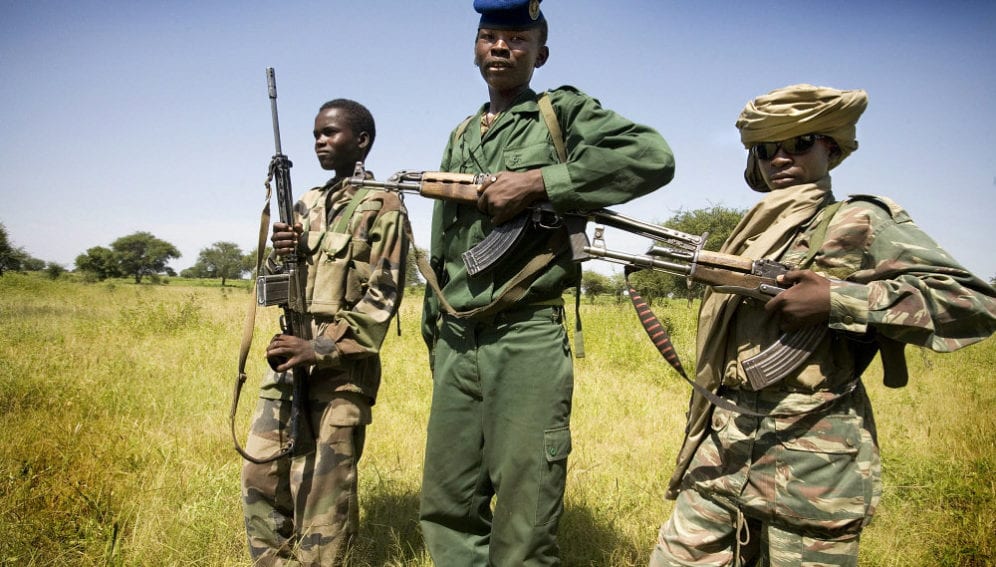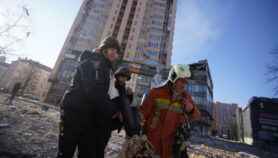By: Anita Makri
Send to a friend
The details you provide on this page will not be used to send unsolicited email, and will not be sold to a 3rd party. See privacy policy.
Reflections on a first-hand account of children used in war shows how humanity and technology shape one another.
Last month, while in East Africa for interviews about higher education — watch out for our Spotlight on the topic later this month — I picked up a book from the handful of English titles stocked by the hotel. It was a personal account of child soldiers by the Canadian senator, humanitarian, author and retired general, Roméo Dallaire.
His first-hand experience of child soldiers in Rwanda while part of a peacekeeping force in 1994 left him “broken … disillusioned, suicidal”, as the book’s back-cover blurb tells it. They fight like soldiers, they die like children, published in 2010, picks up on developments after Dallaire’s gradual recovery. [1]
As I began to read, I thought of April’s 20th anniversary of the Rwandan genocide and the country’s remarkable recovery since that trauma, with both foreign aid and government policy playing a role. [2] One example of Rwanda’s successful initiatives, the Girinka project, is described by Chika Ezeanya as a model for other African countries.
Dallaire’s account oozes anguish, anger and, ultimately, a passion to campaign for the eradication of child soldiering. But it goes beyond emotion and experience to marshal evidence on the use of children in conflict collected over the past few years and across countries, partly through his Child Soldiers Initiative, and to propose new ways of thinking about the problem — which involve technology.
By the time I closed the book, it was clear to me that technology is part of Dallaire’s story of how child soldiers were created, but that — as in the case of land mines — it is also part of the solution. And in both cases, it does not exist in a vacuum: technology’s role can best be understood alongside the social realities that influence its use, and its impact.
Post-colonial vulnerability
In a chapter about ‘How child soldiers are made’, Dallaire focuses on Africa’s Great Lakes region as an example of how years of Western exploitation and failed policies in the post-colonial era left countries prey to ethnic conflict and disrupted societies. For Rwanda, it meant that Hutus and Tutsis were redefined as ethnic groups — with the connotations of superiority that led to conflict — where they were previously known by their occupation (growing crops and herding cattle, respectively).
“This story of child soldiering stands as an example of how technology can both contribute to devastation and offer tools to mitigate that devastation.”
Anita Makri
As states fail and poverty takes hold, young people are disenfranchised — and with no real prospects in life, they become vulnerable to recruitment into armed groups, often but not always forcibly.
There were also practical reasons why the child soldier was created and took hold, according to Dallaire. The increasing availability of children in developing countries with high fertility rates is one; another is the ease with which they can be indoctrinated. Add lethal technology to this mix and you have a recipe for a new ‘weapon system’.
Yet another reason for the rise of the child soldier is the accessibility, over the past few decades, of weapons that are small, light and easy enough to be used by children even younger than ten years of age. The AK-47 is a case in point — its simple design makes it easy to learn to use and repair. Dallaire explains that weapons such as the AK-47 flooded the market at low prices from the Eastern bloc after the Cold War ended.
Looking at a weapon purely as a piece of technology elicits admiration and even a sense of wonder. At the same time, what Dallaire’s account brought home for me is that the use of that weapon is guided by a set of complex social and historical realities, not just its physical attributes and capabilities; and that this brings a collective responsibility about its use.
Society meets technology
In another part of the book, Dallaire recounts his efforts to get humanitarian NGOs and the military to work together to tackle child soldiering — a road full of frustrations, as entrenched attitudes and philosophies fuel scepticism on either side. Nevertheless, it culminated in the launch of his humanitarian movement to eradicate child soldiers. And, within that, Dallaire makes the case that young people are uniquely placed to advocate and influence.
This, he says, is because those born in the last few decades tend to no longer be restricted by outdated notions of categorising people who are different from them, as ‘the other’. Communications technology and increasing mobility means that many think of the world as a patchwork of nations with a common humanity. And so they have a new understanding of collective responsibility.
As I read about the philosophical and technological changes that Dallaire believes put young people in a position to end power abuses, I can’t help but think of the Arab Spring. Abdelkader Djeflat makes a similar argument in our opinion pages: that the evolution of thinking brought about by moves towards a knowledge economy planted a seed — or shaped the context — for the uprisings that technology has enabled.
So, here too, the social meets the technological.
Then, Dallaire adds the media into the mix. Television was the last ‘communications revolution’ before the internet, he says; and by throwing the limelight on human rights abuses it helped international organisations to influence government action.
What ruled the TV-broadcast game in the mid-20th century was the correspondent’s morality, and media outlets’ priorities that were often guided by profit, Dallaire says. But the internet and social media don’t run according to that model. Now, citizens can decide what to disseminate and how — that’s where the potential for change lies.
And so, as I turned the last pages, it occurred to me that this story of child soldiering stands as an example of how technology can both contribute to devastation and offer tools to mitigate that devastation. The life-changing experiences that fuel Dallaire’s account cast them both in an intensely human light.
In a broader sense, it’s an old story: the story of what happens to the products of science once they are released into the world. But it is also a timeless story of how humanity and technology shape one another, each with their own brand of power.
Anita Makri is opinion and special features editor at SciDev.Net.
@anita_makri
References
[1] They fight like soldiers, they die like children (Wikipedia, accessed 11 June 2014)
[2] Tony Blair 20 years after the genocide, Rwanda is a beacon of hope (The Guardian, 6 April 2014)














